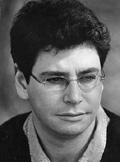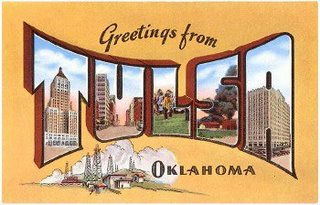
Right then. Here at last is my first contribution to the ongoing project of blogging about Adorno's Aesthetic Theory with Mark Scroggins and Dave Park, both of whom have gotten down to business before I have.
Like Mark and Dave, I'm working with the Robet Hullot-Kentor translation, which tries to preserve Adorno's style — huge paragraphs, no subject headings, sentences that give with one dialectical hand while taking away with the other. We're working on the first sixteen pages at the moment.
Unlike Adorno, I'm a great believer in section headings, so let me begin this way:
1. Obligatory Opening Statement on Adorno's Style
Martin Jay nailed it when he called Adorno's style "paratactic, anti-systematic, non-cumulative." Reading Aesthetic Theory isn't really like reading most philosophy or social thought: there's no sense of thesis-supporting points-conclusions to it. Much has been made out of this. People often seem to want to say that this is a product of Adorno's desire not to be assimilated into any blandifying culture industry pap, not to be dumbed-down and standardized. I suppose there's something to this. And there's something to the idea that Adorno's style comes out of his dialectical thinking -- his sense that there's no such thing as a simple transhistorically true thesis, but that all thinking is contextual and that ideas tend to generate their own contradictions.
As I slowly warm to the style (something I did not actually expect to do), though, I feel more and more that the effect of Adorno's style is like the effect of listening to an exceptionally bright and clever and ironic colleage thinking out loud, and trusting you to catch his ironies, hyperboles, and arcane references, as well as those moments when he's kidding on the square. He begins going in one direction, maintaining, say, that art is hopelessly implicated in the dominant ideology of the time; then suddenly he'll react to the limits of his own thesis, and argue the other way, without entirely ceasing to believe what he'd been arguing. If you can stop worrying about determining Adorno's exact position, you can learn to love the way he writes. Negative dialectics and negative capability are less far apart than one might think.
2. So What's Art For, Anyway?
This is one of the questions animating the first few pages of Aesthetic Theory: Adorno begins by saying that nothing is self-evident about art anymore, least of all its right to exist. As it turns out, he's talking about one of my own favorite themes: the autonomy of art, once it ceases to have a cultic/religious function (as it did for all of those painters of Renaissance altar pieces), or a directly ideological function (as it does in, say, Hyacinth Rigaud's immensely rhetorical portrait of Louis XIV), or even much of a market function (as, say, Dickens' Christmas books did). From about 1910 on, Adorno says, art has been very much on its own, reveling in freedom but worrying about its role in the world.
Adorno says, art has been very much on its own, reveling in freedom but worrying about its role in the world.
There's no easy way out of all this, for Adorno: art just wouldn't be art anymore if it decided to take up a directly social function, as Socialist Realism did. Or as a lot of art did in the 1970s, when it hooked up with identity politics: the other day while flanneuring my way through the local Borders Books I put down a Denise Levertove book I was browsing in when I ran into the section that seemed to renounce art in order to deliver no-doubt-valuable social statements like "That a woman never leave meaningful work for a man; that a man never leave meaningful work for a woman," words just as artless to that effect. Good feminism, but kind of crappy poetry from a poet who has done much better work.
Adorno, probably relishing the scandalousness of his lines, even writes that art may well have no function any more, it may be over with. One senses a thin-lipped smirk appearing briefly on his gravid visage as he thinks of what Hans in Hamburg will think when he reads that.
There does seem to be a purpose to art, often, though it's one Adorno feels quite ambivalent about. I suppose we could call that purpose otherworldliness, though that's not really Adorno's term.
3. The Other Worlds of Art
Adorno maintains that art creates other worlds, different from the empirical world around us. (But what about abstract art? you ask. Good question! But Uncle Teddy Adorno will get there, worry not). These other worlds tend to be consoling, says Adorno, even if they aren't pastoral idylls or splendid utopias. They console, often, simply because they posit the possibility of another way of life. So, I suppose, one  could say that even as depressing and elegaic a writer as Thomas Hardy can be consoling: sure, he shows us a comforting and tough-but-authentic country world only as it is dying, being replaced by a soullessly technological and administrated world. But at least he posits the countryside as a kind of other world, a repository of dying virtues. The weary bourgeois may put aside the copy of Tess of the D'Urbervilles he's been re-reading in order to teach it at, say, Lake Forest College, glance over at his wife and say something like "Hey, Valerie -- whaddaya say we rent us a cottage in the Cotswolds next summer?" This consolation is bad news for Adorno, though: it is the opiate of the masses, the pap for the dispossessed, the thing that keeps us from changing the unjust world in which we live.
could say that even as depressing and elegaic a writer as Thomas Hardy can be consoling: sure, he shows us a comforting and tough-but-authentic country world only as it is dying, being replaced by a soullessly technological and administrated world. But at least he posits the countryside as a kind of other world, a repository of dying virtues. The weary bourgeois may put aside the copy of Tess of the D'Urbervilles he's been re-reading in order to teach it at, say, Lake Forest College, glance over at his wife and say something like "Hey, Valerie -- whaddaya say we rent us a cottage in the Cotswolds next summer?" This consolation is bad news for Adorno, though: it is the opiate of the masses, the pap for the dispossessed, the thing that keeps us from changing the unjust world in which we live.
Abstract art, or art that otherwise refuses to be about, or in the service of, anything but itself (think Mallarme, say), is just as suspect to Adorno. Its radical autonomy, and its rejection of the empirical world
The principle of autonomy is itself suspect of giving consolation: by undertaking to posit totality out of itself, whole and self-encompassing, the image [of another world] is transferred to the world in which art exists and that engenders it.
Think of Huysmans' Des Essenties from A Rebours here, or of any dandyish aesthete living on and for art alone. To lose oneself in art serves much the same function as losing oneself in a Hardyesque dream of the virtuous other world of the countryside. Or imagine the bourgeois and his wife taking a weekend trip down to, say, The Art Institute of Chicago, and tripping on the Calders and Mondrians, and feeling a general sense of peace and harmonious balance in all those clean well-lighted rooms as they let the disorder of the external world take care of itself. On the way back to their Honda they'll pass homeless people looking for handouts, but by the time they're home they'll be pawing through the exhibition catalog and chatting happily about it all.
And that's not all. Check this out, a continuation of Adorno's last bit on autonomous art. Autonomous art is suspect of giving consolation "by virtue of its rejection of the empirical world ... art sanctions the primacy of empirical reality." Okay! By Adorno's reckioning, then, when a guy like Kazimir Malevich painted his red squares on white backgrounds, he was treading on dangerous ground. And when Malevich said that he wanted his ideal viewer to stand in front of his painting and say "everything I knew is dead -- before me stands a red square on a white field" he was in even deeper trouble. Instead of making a bold, past-clearing gesture, a gesture that puts us in touch with the primal act of seeing, Malevich was surrendering to the world as it is. His viewer gives up on any engagement with the world out there and, gooned on red, becomes a kind of lotus-eating quietist. Art becomes an opiate — if not for the masses, then at least for the connoisseurs.
like Kazimir Malevich painted his red squares on white backgrounds, he was treading on dangerous ground. And when Malevich said that he wanted his ideal viewer to stand in front of his painting and say "everything I knew is dead -- before me stands a red square on a white field" he was in even deeper trouble. Instead of making a bold, past-clearing gesture, a gesture that puts us in touch with the primal act of seeing, Malevich was surrendering to the world as it is. His viewer gives up on any engagement with the world out there and, gooned on red, becomes a kind of lotus-eating quietist. Art becomes an opiate — if not for the masses, then at least for the connoisseurs.
4. But no!
And here's where Adorno does a little dialectical pirouette. While he finds art that consoles to be insufferable in a deeply unjust and imperfect world, he thinks that art that interrogates or attacks or investigates its own foundations — art that takes a good hard look at what it is that art does — to be potentially redemptive. It can be as oppositional as it is (malevolently) consoling.
What does this mean? I suppose Adorno has something like Dada in mind: avant-garde art that questions what it is art is for. So when the Dadaists displayed their art with hammers and axes next to it, for the viewer who didn't like it to smash it to bits if he so desired, they were showing us all sorts of fundamental things about the bases of art. For one, they were showing us how passive our relationships with art objects usually are: we're just supposed to soak up art's consolations, and if we find those consolations problematic we're left with little recourse but some private grumbling. (There's a terrible irony in what's happened to Dada: exhibited at places like the National in D.C. reverantly, and with nary a hammer to hand, and with no one taking the provocation to blast what one dislikes seriously. I've been thinking about this lately, and I think I can make a chapter of my next book out of the fate of the Dada tradition. I mean, the institutions have really eaten Dada. One wonders if Dada poisoned them in the process, changing them fundamentally as much as the institutions changed Dada? But I digress).
I think Adorno's observation about self-interrogating art's ability to contest as well as console applies to a lot of art we wouldn't think of as avant-garde, though. Consider this poem of Ken Smith's, which I had the pleasure to publish in Samizdat back in 1998:
Countryside Around Dixton Manor, Circa 1715

[Countryside around Dixton Manor is the title of a huge painting by an anonymous artist, dated circa 1715, on view in Cheltenham Art Gallery.
The harvest verse is from Five Hundred Points of Good Husbandry, 1580, by Thomas Tusser, published by OUP, 1984]
Now strike up drum
come harvest man come.
Blowe horne or sleapers
and cheere up thy reapers
Layer under layer under the paintwork
England is making its Midsummer hay—
the dancing morris, pipelads and drum,
scythemen and rakers, cockers and carters
and centrefield my lord with his ladies
riding where now the pylon hums
with its wires over spring wheat
through the early morning mist.
These are the same hedgebacks,
same lie to the landscape, Mickle Mead,
Barrowdine, Harp Field and Sausage
still here though the names gone now.
*
In oils, unsigned, anonymous, a jobber
moving through landscape, used maybe
the wide angle lens of the camera oscura
for this sweep of a corner of Gloustershire,
back when all was thought well enough,
and nothing would change beyond this—
these peasants sweating in harvest
content dreaming brown ale and a fumble
among the haycocks, and the dancers dance off
to their drink and their shillings. My lord lies now
and since and soon and thereafter in Alderton
in St Mary of Antioch, long dead.
*
Long gone, nameless maids in a row,
long curve of the back of 23 men
in a Mexican wave of swung scythes
to their lost graves. Two gossips
by the gate that is still a gate
maybe went for infantry, and the pipeboy
shipped out to the far world, most
stayed, went hungry, died anyway.
The painting’s a lie, the landscape true
where the field keeps its shape. Everything
beyond this moment is yet to happen.
Everyone here is part of the dust now.
*
If my heart aches it’s for this
though none of it’s true:
the world we have lost never was
so we never lost it:
glitter of horse brass, bells
rolling over the evening:
all my lord’s dream of himself
in a hired man’s painting:
same tale then as now
and this has not changed either:
the enrichment of the rich,
impoverishment of the poor.
None but the reaper
will come to your door.
On the one hand, the poem is all about pastoral consolations. On the other hand, Smith acknowledges the fictive nature of those consolations: he knows that what his heart aches for (a just and better and altogether more congenial world) never existed, at least not under the old squirearchy in the eighteenth century. So he lets us feel deeply his (and, be extention our) need for a better world, gives it as local habitation and a name by embodying it in the painter's vision, and then tells us that there's no point pining for that past. We're consoled, but we're also left questioning what we could do, and where in the world we could turn, to find or make the better, other world.
5. A Bunch of Stuff on the Origin of the Work of Art
Adorno next tells us that there's no single, authoritative concept of what art must be. Definitions are historically contingent and prone to change. This was probably a more interesting and controversial section back when the academy still harbored tweedy old coots who though the Greek ideas were the best ideas because the Greek ideas were the first ideas. There's a kind of anthroplogical The Raw and the Cooked quality to this section: Adorno makes a big deal out of art being defined, at each historical moment, against whatever the culture deems to be "non-art."
The most interesting bit for me, here, has to do with autonomous art again: Adorno tells us that "artworks became artworks only by negating their origin." That is, only after they left off their "ancient dependency on magic" and their "servitude to kings and amusement" did they become art, in the present sense of the word. Autonomy is essential to the artwork at this particular point in time, and we define it against religious artefacts, ideological shills, and mere fun. (Here's a point where you can feel that things have changed since Adorno wrote: the high/low distinctions in art, and the art/fun distinctions have been largely eroded — I'm sure Adorno would have something clever and interesting to say about this, too).
Yargh. I've got to catch a train, and I see that I've covered only about four pages of Adorno. Well, more later. Metrarail is a cruel mistress.





























